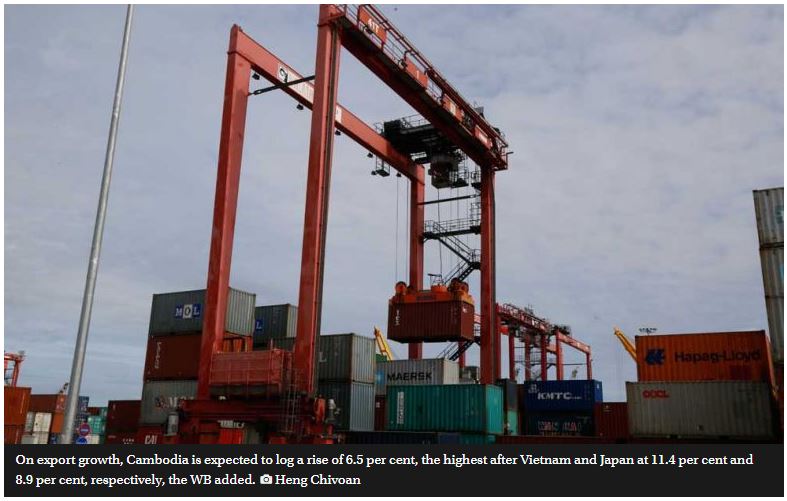Cambodia: Kingdom may exit LDC ‘by 2028’ on RCEP
The Regional Comprehensive Economic Partnership (RCEP) agreement could provide a “vital impetus” to drive the Cambodian economy to exit Least Developed Country (LDC) status by 2028, according to the commerce minister on March 14.
Minister of Commerce Pan Sorasak made the comment at a workshop titled “RCEP: Implications, Challenges and Future Growth of East Asia and ASEAN”, which was jointly organised by the Jakarta-based think tank Economic Research Institute for ASEAN and East Asia (ERIA) and the commerce ministry’s Trade Training and Research Institute (TTRI), the ministry noted in a statement on March 15.
According to the ASEAN secretariat, the RCEP entered into force on January 1 in 10 of 15 member states – Cambodia, Australia, Brunei, China, Japan, Laos, New Zealand, Singapore, Thailand and Vietnam. The pact then went into effect in South Korea on February 1, as reported by Yonhap News Agency.
Malaysia submitted its instrument of ratification (IoR) to the secretariat on January 17 – as confirmed by the New Straits Times citing the trade ministry – and the deal will be effective from March 18. The three remaining countries, Indonesia, Myanmar and the Philippines – all ASEAN states – have yet to submit their IoRs.
The commerce minister underlined that the RCEP was not merely a garden-variety agreement, but a key driver of regional economic growth for during and after the Covid-19 pandemic.
Sorasak said the deal would help to cushion the blow from growing global uncertainties, including stalled multilateralism at the World Trade Organisation,the increasing employment of unilateral protectionist policies among member states, and potential spillover from the ongoing crisis in Ukraine.
“To Cambodia, the agreement constitutes a modern legal platform that inspires the country to opt for more liberalised FTAs [free trade agreements], using the RCEP as a model or threshold for liberalisation, and to undertake many reforms to feasibly keep its standards … in line with the pact, including in infrastructural, legal and institutional areas.
“This agreement is also a well-timed intervention in Cambodia’s quest for an LDC graduation, likely by 2028, and the country’s endeavours to achieve the upper middle income and high income statuses by 2030 and 2050, respectively,” he said.
Late last month, the World Bank (WB) noted that Cambodia ranked third in both real income gains and export growth among RCEP members.
In a working paper entitled “Estimating the Economic and Distributional Impacts of the Regional Comprehensive Economic Partnership”, the Washington-based lender said the Kingdom came in third in terms of real income gains, after Vietnam and Malaysia.
On export growth, Cambodia is expected to log a rise of 6.5 per cent, the highest after Vietnam and Japan at 11.4 per cent and 8.9 per cent, respectively, the WB added.
The 46-page research paper said the deal has the potential to lift 27 million additional people to middle-class status by 2035.
“Considering the full scenario, with reductions in tariffs, non-tariff measures, and trade costs, Lao PDR, Thailand, Cambodia, Vietnam and Malaysia benefit the most. These positive gains are magnified when a productivity kick is assumed.
“Interestingly for Japan, the impact of the four RCEP scenarios is similar, which suggests that most gains are associated with a fall in tariffs, in contrast to the rest of the countries, where the fall in tariffs leads to very small impacts, or even a negative impact as in Cambodia and Vietnam.
“In terms of total exports, the sectors that expand the most for Cambodia are wood and paper products [34.8 per cent], chemical, rubber and plastics [25.3 per cent], and electrical equipment, and machinery [24.2 per cent] expand the most.
“[This is] the result of tariff reduction in the case of chemical, and plastics [two percentage point reduction, between 2035 and 2020], and due to non-tariff measure reduction for wood and paper [14.8 percentage points decrease between 2035 and 2020],” it said.
The commerce minister pointed out that the RCEP is the world’s largest trade bloc, with a combined gross domestic product (GDP) to the tune of $26.2 trillion or 30 per cent of world GDP, accounting for about 28 per cent of global trade and 32.5 per cent of global investment.
An ERIA study also found that the pact would boost Cambodia’s GDP an additional two per cent, increase exports by an extra 7.3 per cent and raise investment by an added 23.4 per cent.
Still, Sorasak said, the pact provides a host of other positive externalities, “including opportunities to address pandemic recovery and post-pandemic structural transformation through employment effects, investment encouragement, poverty alleviation, and the promotion of more socially inclusive benefits from the agreement”.
“It is expected that the RCEP will play an important role in regional integration and pandemic and post-pandemic recovery.”
Source: https://www.phnompenhpost.com/business/kingdom-may-exit-ldc-2028-rcep


 English
English




